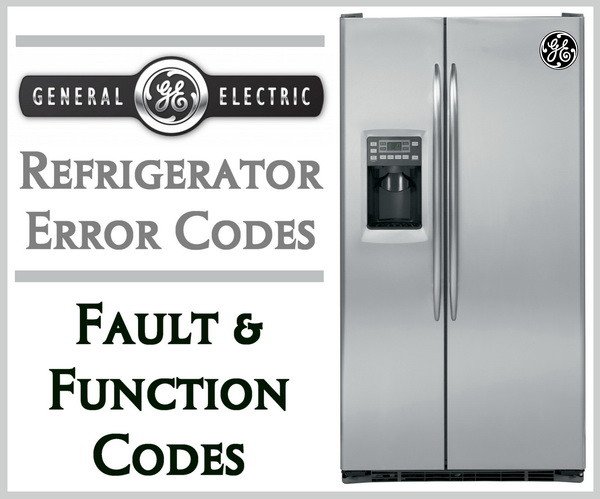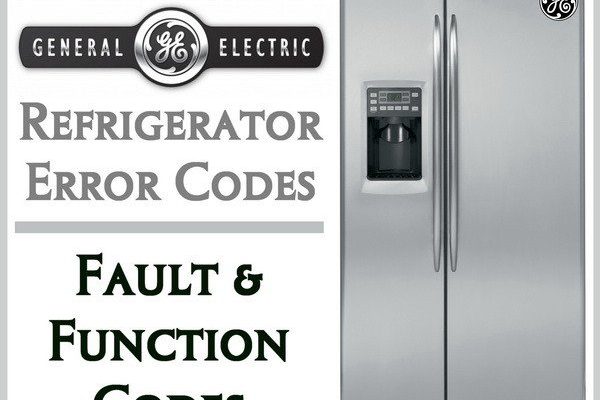
You might be wondering how serious this error really is and whether it’s safe to keep using your refrigerator. Well, here’s the deal: while your fridge won’t blow up or stop working immediately with this error, ignoring it isn’t the best idea either. Running a refrigerator with a malfunctioning defrost system can lead to a whole host of problems, like your food spoiling faster due to uneven cooling, or your fridge working overtime and using more energy than necessary.
Understanding the E3 Error Code
Let’s delve a bit deeper into what the E3 error really means. The E3 error code usually points to a problem in the refrigerator’s defrost system. Think of the defrost system as your fridge’s personal maintenance crew, tasked with ensuring that ice doesn’t accumulate on the evaporator coils. When these coils get too icy, your fridge can’t cool properly. It’s a bit like trying to fan yourself with a piece of cardboard instead of a proper fan on a hot day—it just doesn’t work effectively.
So, what’s really going wrong when you see this code? Typically, an E3 error indicates that the sensor which monitors the ice level on these coils might be faulty or that the heater, responsible for melting any excess ice during the defrost cycle, isn’t working correctly. In simple terms, it’s like having a broken thermometer telling you it’s warm when, in fact, it’s freezing.
Now, why should you care about this? Well, if these components aren’t working correctly, your fridge’s efficiency drops. It starts consuming more energy to do the same job, similar to how you’d exert more energy trying to write with a blunt pencil. This inefficiency can slowly escalate if left unattended, leading to higher electricity bills and potential long-term damage to the fridge.
Is It Safe to Use Your Refrigerator with This Error?
Safety is always a top priority when it comes to appliances we use every day, like a refrigerator. When faced with the E3 error, you might think, “Is it still safe to stash my groceries in here?” The short answer is yes, but with a cautionary note. Your fridge won’t become a food hazard overnight, but using it long-term without addressing the error can lead to issues like inconsistent temperatures. Imagine wearing a sweater in some rooms and a tank top in others—your food can face the same confusion with warm spots in some areas and cold in others.
Running your refrigerator this way might also push it to work harder, leading to a quicker wear and tear of its parts. This is similar to running a marathon without proper shoes—you’re eventually going to hurt your feet. So while it’s safe for a short period, it’s not advisable as a long-term solution.
To keep things running smoothly, it’s best to address the problem sooner rather than later. Contacting a professional or checking if your refrigerator is still under warranty can be a great start. They can provide the necessary repairs or replacements to get your fridge back to its optimal state, ensuring safety for your food storage.
Steps to Address the E3 Error
Let’s talk about how you can tackle this issue head-on. You don’t have to be a refrigerator whisperer to handle an E3 error, but taking a few proactive steps can make a big difference. Firstly, check your fridge’s manual—yes, that little booklet you probably tossed in a drawer. It can offer specific guidance related to error codes and troubleshooting steps.
If you’re comfortable with a bit of DIY, try performing a manual reset of your refrigerator by unplugging it for a few minutes and then plugging it back in. This simple action can sometimes clear minor glitches. It’s like rebooting your computer when it starts acting up—it might just do the trick.
If these steps don’t resolve the issue, it’s wise to call in the experts. A professional technician can diagnose the problem accurately, ensuring the right components are fixed or replaced. This not only restores your fridge to its proper working condition but also keeps your food safe and your energy bills in check.
Preventative Measures for Future Peace of Mind
Once you’ve addressed the E3 error, it’s time to think about prevention. Regular maintenance is key here. Like changing the oil in your car to keep it running smoothly, your refrigerator benefits from periodic checks and cleanings. Keeping the coils clean and ensuring the vents aren’t blocked can greatly improve your fridge’s efficiency.
Consider setting up routine maintenance checks with a professional, especially if your refrigerator is a bit older. Catching issues early is always easier—and usually cheaper—than dealing with a major appliance breakdown down the road.
Finally, keep an eye on your refrigerator’s performance. If you notice anything unusual, like frost build-up or strange noises, don’t ignore it. Addressing these early warning signs can save you from future headaches and ensure your fridge remains a reliable part of your home.
In conclusion, while spotting an E3 error on your GE refrigerator might feel daunting, approaching the issue with understanding and action will keep your appliance safe and efficient for years to come.
